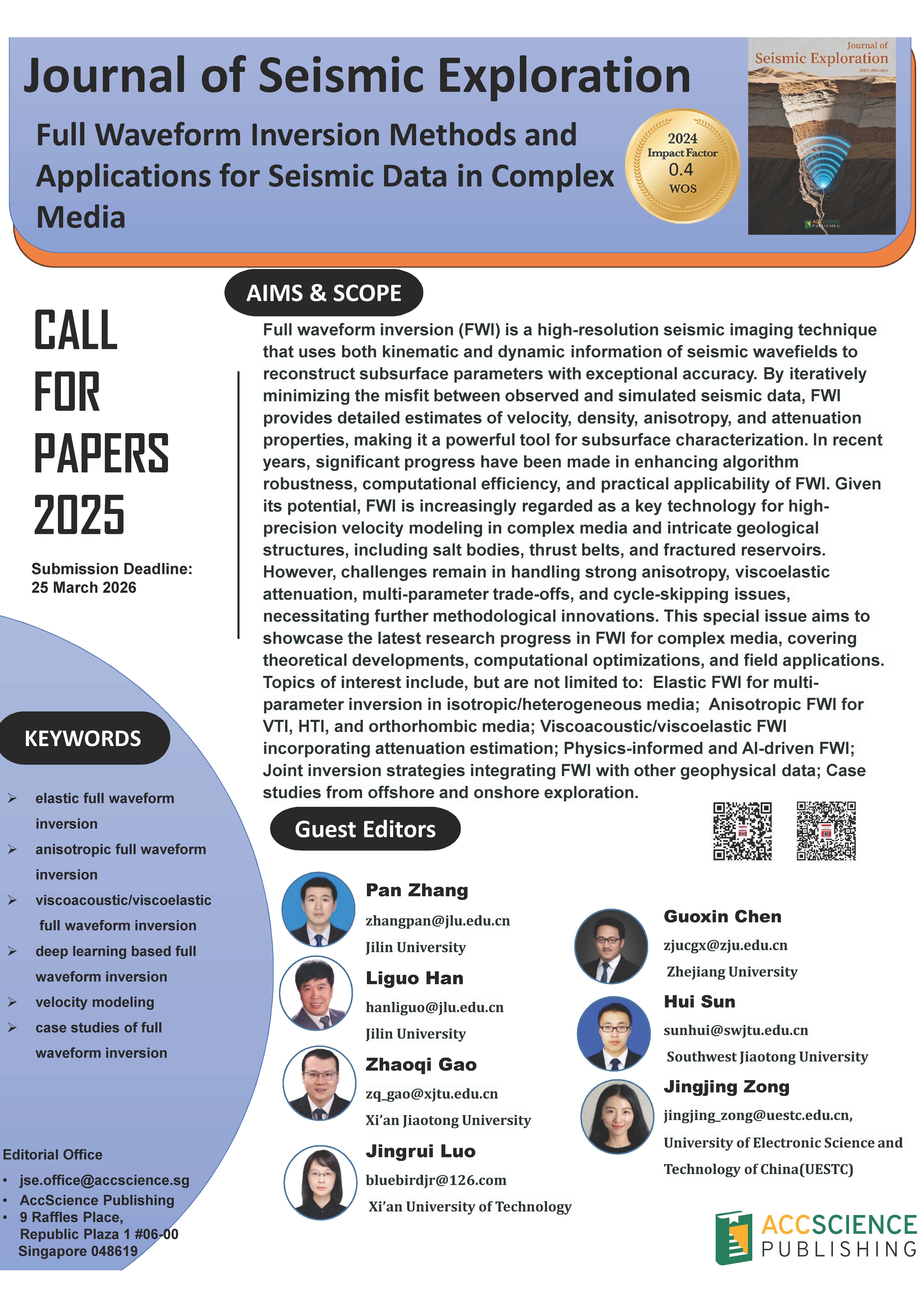
Dear Colleagues,
Full waveform inversion (FWI) is a high-resolution seismic imaging technique that uses both kinematic and dynamic information of seismic wavefields to reconstruct subsurface parameters with exceptional accuracy. By iteratively minimizing the misfit between observed and simulated seismic data, FWI provides detailed estimates of velocity, density, anisotropy, and attenuation properties, making it a powerful tool for subsurface characterization. In recent years, significant progress have been made in enhancing algorithm robustness, computational efficiency, and practical applicability of FWI. Given its potential, FWI is increasingly regarded as a key technology for high-precision velocity modeling in complex media and intricate geological structures, including salt bodies, thrust belts, and fractured reservoirs. However, challenges remain in handling strong anisotropy, viscoelastic attenuation, multi-parameter trade-offs, and cycle-skipping issues, necessitating further methodological innovations. This special issue aims to showcase the latest research progress in FWI for complex media, covering theoretical developments, computational optimizations, and field applications. Topics of interest include, but are not limited to:
- Elastic FWI for multi-parameter inversion in isotropic/heterogeneous media;
- Anisotropic FWI for VTI, HTI, and orthorhombic media;
- Viscoacoustic/viscoelastic FWI incorporating attenuation estimation;
- Physics-informed and AI-driven FWI;
- Joint inversion strategies integrating FWI with other geophysical data;
- Case studies from offshore and onshore exploration
Dr. Pan Zhang
Professor Liguo Han
Professor Zhaoqi Gao
Dr. Jingrui Luo
Dr. Guoxin Chen
Dr. Hui Sun
Dr. Jingjing Zong
Guest Editors
Modeling the seismic wave equation using a staggered grid finite-difference method optimized with a genetic algorithm
High-precision full-waveform inversion velocity modeling and broadband processing for a deepwater exploration of the South China Sea









